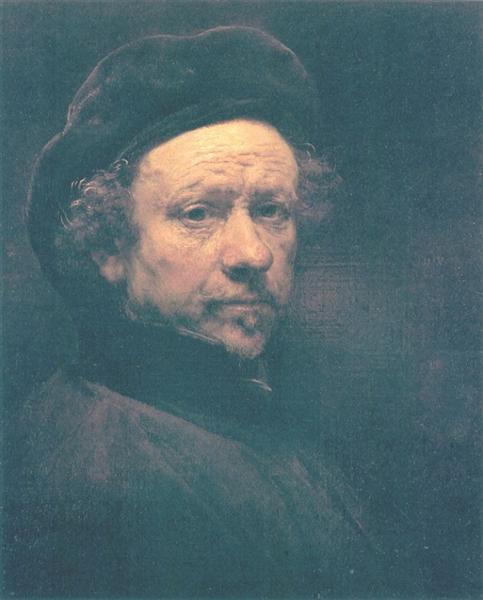Description
In 1659, Rembrandt Harmenszoon van Rijn conceived one of his most introspective and memorable works in the form of a self-portrait. This painting, which joins a remarkable series of self-portraits throughout his life, allows us a penetrating look into the artist's psychology and his aesthetic evolution in the context of the Baroque. In this work, Rembrandt presents a visual treatment that stands out for its mastery in the use of chiaroscuro, as well as for the emotional depth that resonates through the nuances of light and shadow.
The composition of this self-portrait is both intimate and powerful. The artist stands in the foreground, offering the viewer a direct encounter with his gaze. Throughout his career, Rembrandt distinguished himself by his ability to capture the essence of the human being, and in this portrait, his face reveals a combination of wisdom and vulnerability, reflecting the wear and tear of time and the life experiences that have marked him. The wrinkles on his forehead and the lines around his eyes are subtle, but significant, evoking a story of reflection and self-observation.
The use of colour in this self-portrait is remarkable. The palette is composed mainly of dark and earthy tones, which place the viewer in a sober and contemplative atmosphere. The dark background becomes an element that intensifies the luminosity of her face, which is subtly illuminated by an overhead light that highlights her forehead, cheeks and the upper part of her torso. This lighting also helps to model her facial features with great naturalness, showing her technical skill when it comes to depicting the flesh and texture of the skin.
In addition to its characteristic technique, this self-portrait is notable for the details of the artist’s clothing: a black velvet cap and a light-colored cloak that contrast with the dark background, suggesting a deliberate use of clothing to convey nobility and self-assertion. These elements are not only a reflection of his social status, but also mark the transition towards a more personal and less conventional style in his art, leaving behind the idealized representations of the portrait in favor of a raw authenticity.
Rembrandt’s 1659 Self-Portrait also fits into a larger corpus of introspective works by the artist. Throughout his life, he made numerous self-portraits, almost like a visual diary that traced his path in life and the transformation of his own identity. This particular one stands out for its realism and the way his gaze seems to seek connection with the viewer, inviting them to share a moment of silent understanding. At a time in his life marked by personal adversity, loss, and financial struggle, this work can be seen as a reflection of his resilience in the face of external circumstances.
Thus, the 1659 self-portrait is not only a portrait, but also a moment in time that encapsulates Rembrandt’s technical mastery and profound humanity. It brings together the light and shadow of his life, art and existence, establishing it as a fundamental piece in the study of portraiture and the Baroque, continuing to inspire generations of artists and viewers alike. This self-portrait stands not only as an exploration of the artist’s identity, but as a meditation on the human condition, a legacy that endures far beyond its own time.
KUADROS ©, a famous painting on your wall.
Hand-made oil painting reproductions, with the quality of professional artists and the distinctive seal of KUADROS ©.
Painting reproduction service with satisfaction guarantee. If you are not completely satisfied with the replica of your painting, we will refund 100% of your money.

